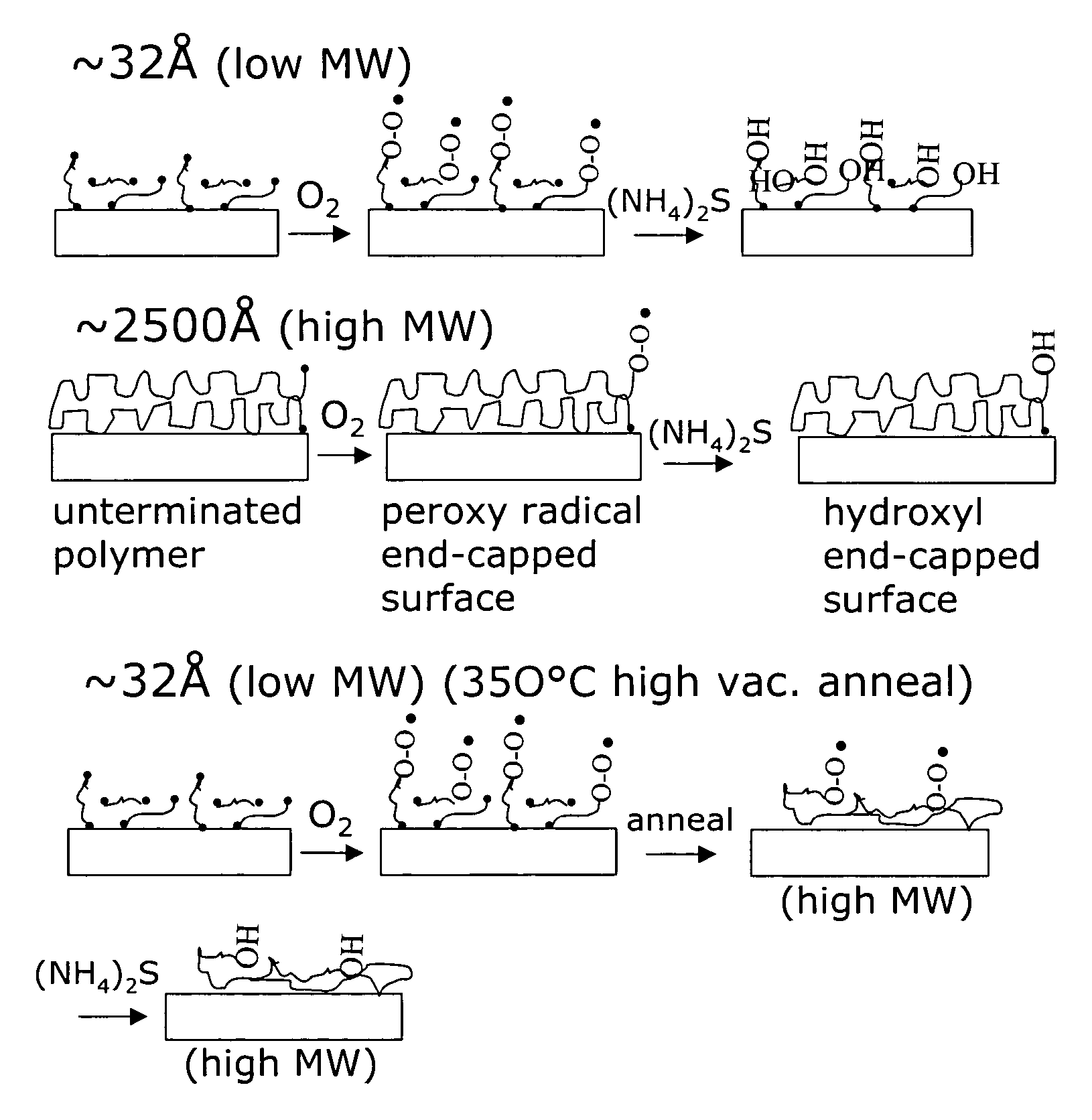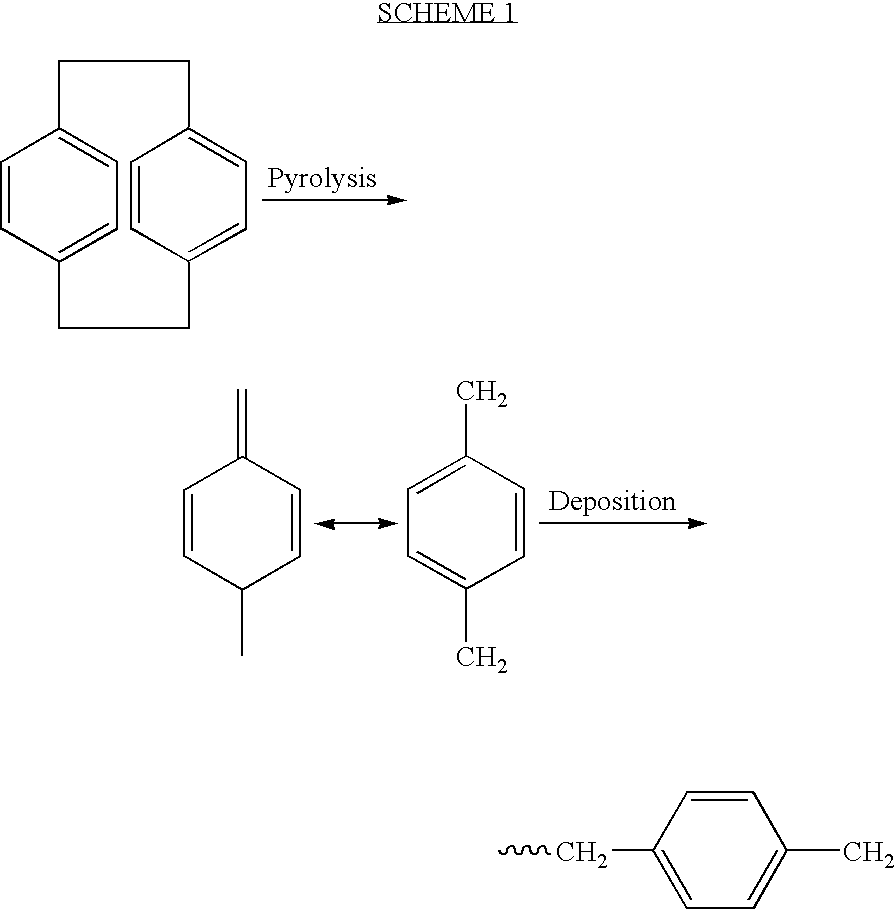Surface modification of CVD polymer films
a polymer film and surface modification technology, applied in the field of polypxylene polymers, can solve the problems of not only the polymer surface, but also the polymer surface is notoriously hard to metallize and adhere, and the surface free energy is low, so as to achieve convenient bonding to metal or polymeric surfaces. , the effect of convenient functionalization
- Summary
- Abstract
- Description
- Claims
- Application Information
AI Technical Summary
Benefits of technology
Problems solved by technology
Method used
Image
Examples
Embodiment Construction
[0010]The present invention relates to methods for depositing conformal coatings having a reactive surface. The method includes depositing on a substrate by a thermal CVD process an ultrathin polymer layer. In the context of the present invention, an ultrathin layer or film is defined as one having a thickness of less than 500 Å, preferably less than 200 Å, more preferably, less than 100 Å and most preferably, less than 50 Å. A thick layer or film is defined as one having a thickness greater than 1000 Å. The ultrathin layer has a relatively high concentration of chain ends, in contrast to a thick polymer layer, which has relatively fewer chain ends. This is illustrated in FIG. 1, which shows schematically the difference between an ultrathin layer and a thick layer. Thick polymer films, which may have molecular weight in the range of 10,000-20,000 Daltons, have few reactive species at the surface, while very thin films of similar composition have many chain endings at the surface sin...
PUM
| Property | Measurement | Unit |
|---|---|---|
| dielectric constant | aaaaa | aaaaa |
| dielectric constant | aaaaa | aaaaa |
| molecular weight | aaaaa | aaaaa |
Abstract
Description
Claims
Application Information
 Login to View More
Login to View More - R&D
- Intellectual Property
- Life Sciences
- Materials
- Tech Scout
- Unparalleled Data Quality
- Higher Quality Content
- 60% Fewer Hallucinations
Browse by: Latest US Patents, China's latest patents, Technical Efficacy Thesaurus, Application Domain, Technology Topic, Popular Technical Reports.
© 2025 PatSnap. All rights reserved.Legal|Privacy policy|Modern Slavery Act Transparency Statement|Sitemap|About US| Contact US: help@patsnap.com



